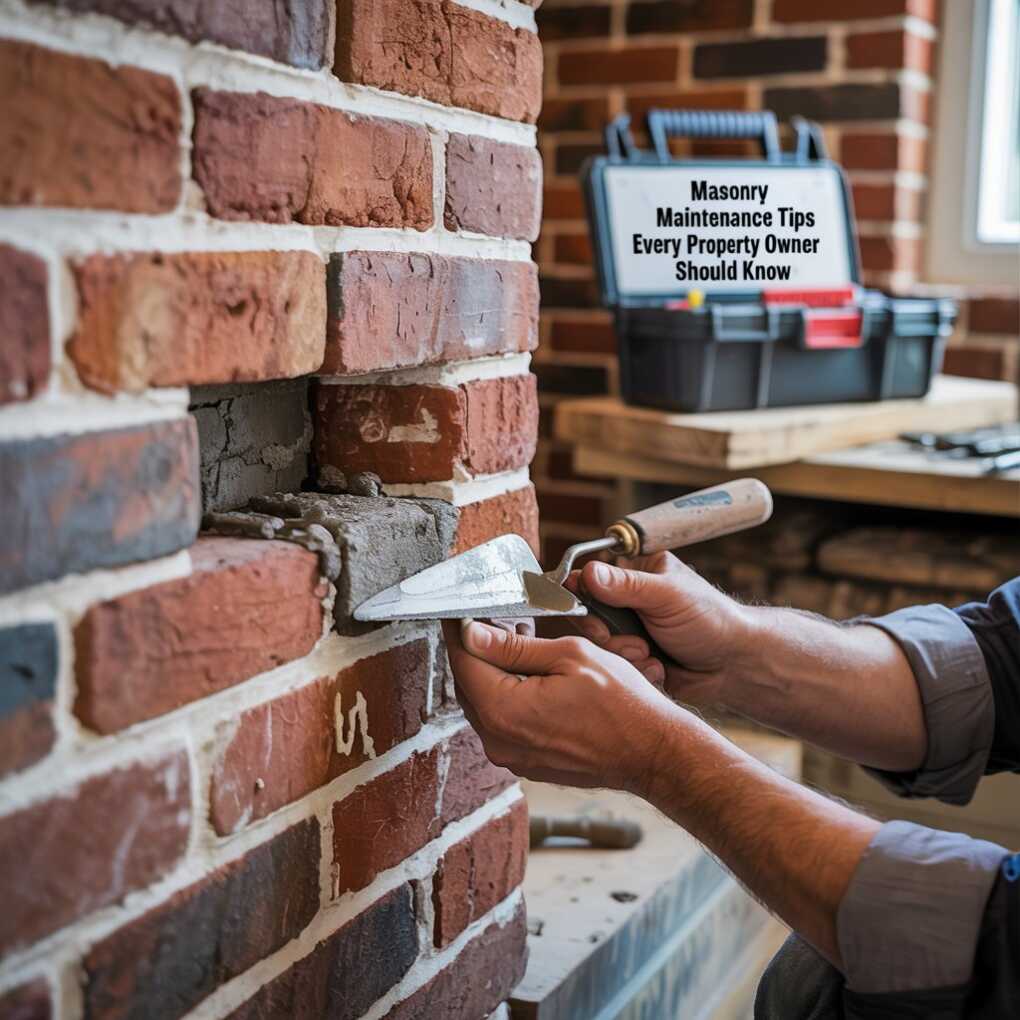Masonry is one of those building materials that seems like it will last forever. Brick, stone, and block walls have been standing strong for centuries, and many property owners assume they will never need much attention.
I can tell you from experience, though, that is not the case. Even the strongest walls can wear down when water, weather, and time all start working against them. The good news is, with regular care and a watchful eye, your masonry can last for generations.
Let’s go over some simple tips that every property owner should know. These are the same things I tell my clients when I walk around their homes or buildings, pointing out what needs attention before it becomes an expensive repair.

Inspect Your Masonry Regularly
One of the best habits you can build is checking your masonry twice a year. I usually recommend walking around in the spring, once the snow and ice are gone, and again in the fall before winter sets in.
Look closely at the joints between the bricks or stones. If you see cracks, crumbling mortar, or small gaps, those are early warning signs that your wall is losing strength.
I have seen homeowners ignore small cracks that could have been fixed in a day, only to call me years later when part of the wall had shifted. At that point, the repair turned into a major job that cost several times more than it should have.
Keep Water Away From Your Walls
If there is one thing you need to remember about masonry, it is that water is the number one enemy. Bricks and stones can handle almost anything, but once water gets inside, the trouble begins.
Make sure your gutters and downspouts are clean and doing their job. If water is spilling over the sides or collecting near the base of your home, it is only a matter of time before that moisture starts seeping into your masonry. Grading the soil so it slopes away from your foundation is a simple but very effective step.
I once worked on a house where the downspouts had been dumping water right next to the foundation for years. The homeowner could not figure out why the basement was damp and why the walls were starting to bow. All it took was rerouting the drainage, but by then, the masonry needed major reinforcement.
Clean Surfaces the Right Way
Masonry looks great when it is clean, but dirt, moss, and mildew will always find a way to settle on it. Many property owners grab a pressure washer because it seems like the fastest way to clean things up. The problem is, high pressure can strip away mortar and weaken your walls.
The safe way is much simpler. Use a garden hose with a spray nozzle and a soft brush for stubborn spots. If you need something stronger, mild soap and water will usually do the trick. Keeping it gentle will keep your walls strong.
Repair Mortar Joints When Needed
The mortar between bricks or stones is just as important as the materials themselves. Over time, mortar starts to wear down, crack, or even fall out completely. When you notice this happening, it is time for repointing, which is the process of replacing the old mortar with fresh material.
Skipping this step allows water to sneak in through the gaps, and once water gets behind the masonry, you are on the path to larger cracks, loose bricks, or even collapsed sections. I have seen entire chimneys lean dangerously just because the mortar was left unchecked for too long.
Protect Against Freeze and Thaw Cycles
If you live in a part of the country where winters are cold, freeze and thaw cycles can be brutal on masonry. Here is how it works. Water seeps into small cracks or porous spots, then freezes when the temperature drops. Frozen water expands, and that pressure forces the cracks to grow bigger. The next thaw allows more water in, and the cycle keeps repeating until you have serious damage.
The best defense is to make sure cracks and mortar joints are sealed and repaired before winter. It is much easier to do maintenance in the fall than to rebuild a damaged wall in the spring.
Avoid Harsh Sealants and Paints
It is tempting to paint brick or cover stone with a heavy sealant to give it a fresh look. I always caution homeowners against this unless they are using the right products. Many paints and sealants trap moisture inside the masonry, which causes it to deteriorate from the inside out.
If you really want to seal your masonry, stick with breathable products designed specifically for brick or stone. These allow moisture to escape while still providing a layer of protection.
Call a Professional for Serious Repairs
There are plenty of things you can do on your own, like cleaning or keeping an eye on drainage, but some jobs require a professional. If you notice leaning walls, large cracks, or crumbling mortar across an entire section, it is best to bring in a mason.
I have seen too many well-meaning homeowners try to patch things with the wrong mortar mix or a quick-fix product from the hardware store. It looks fine for a few months, but then the problem comes back even worse. A professional has the tools, materials, and experience to get it done right the first time.
Final Thoughts
Masonry is strong, durable, and timeless, but it is not indestructible. By inspecting your walls, keeping water away, cleaning gently, repairing mortar joints, and avoiding harsh treatments, you will keep your masonry solid and beautiful. Add in the wisdom of knowing when to call a professional, and you will save yourself both time and money.
The way I see it, a little care today means your brick, stone, or block walls will still be standing strong when the next generation takes over your property.
